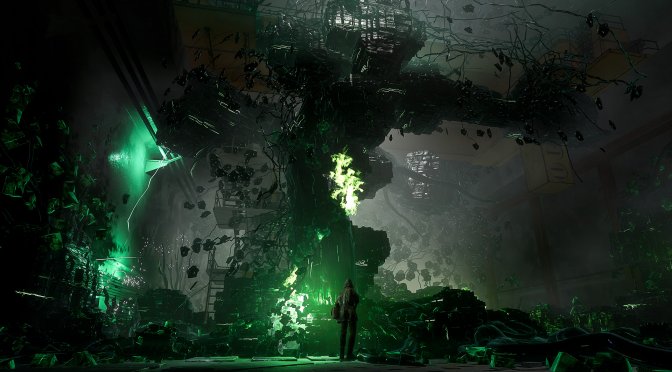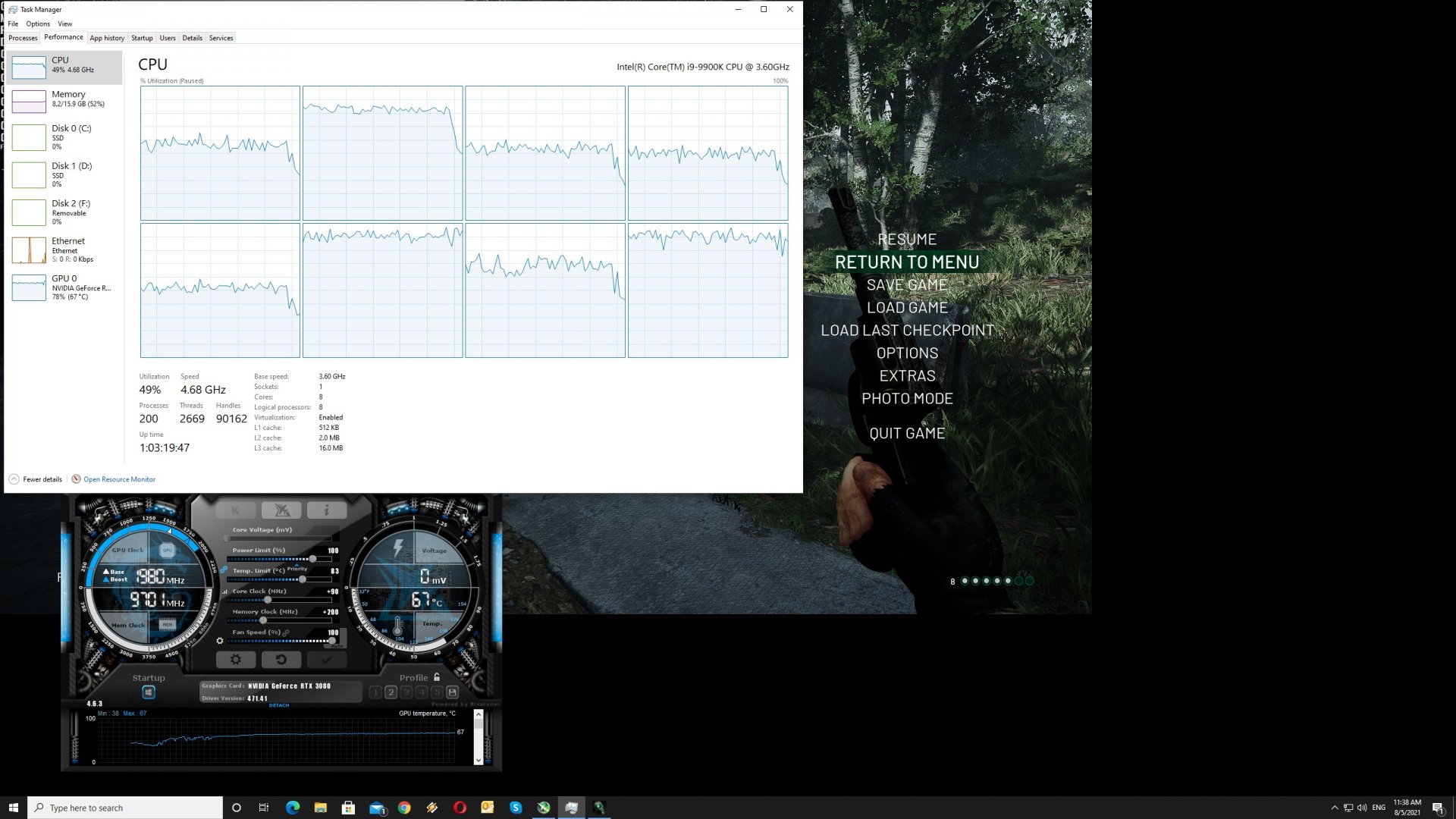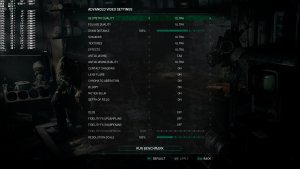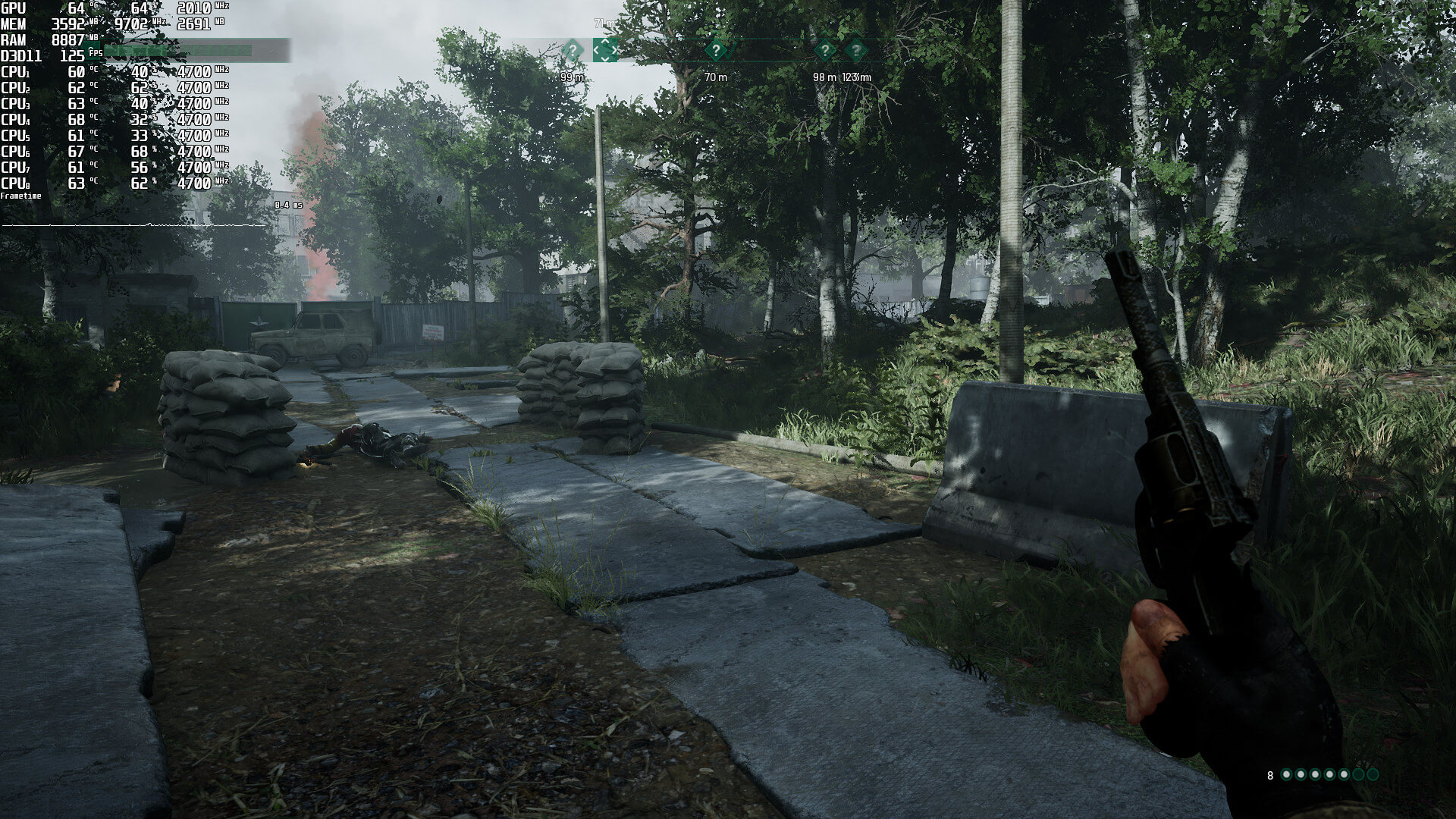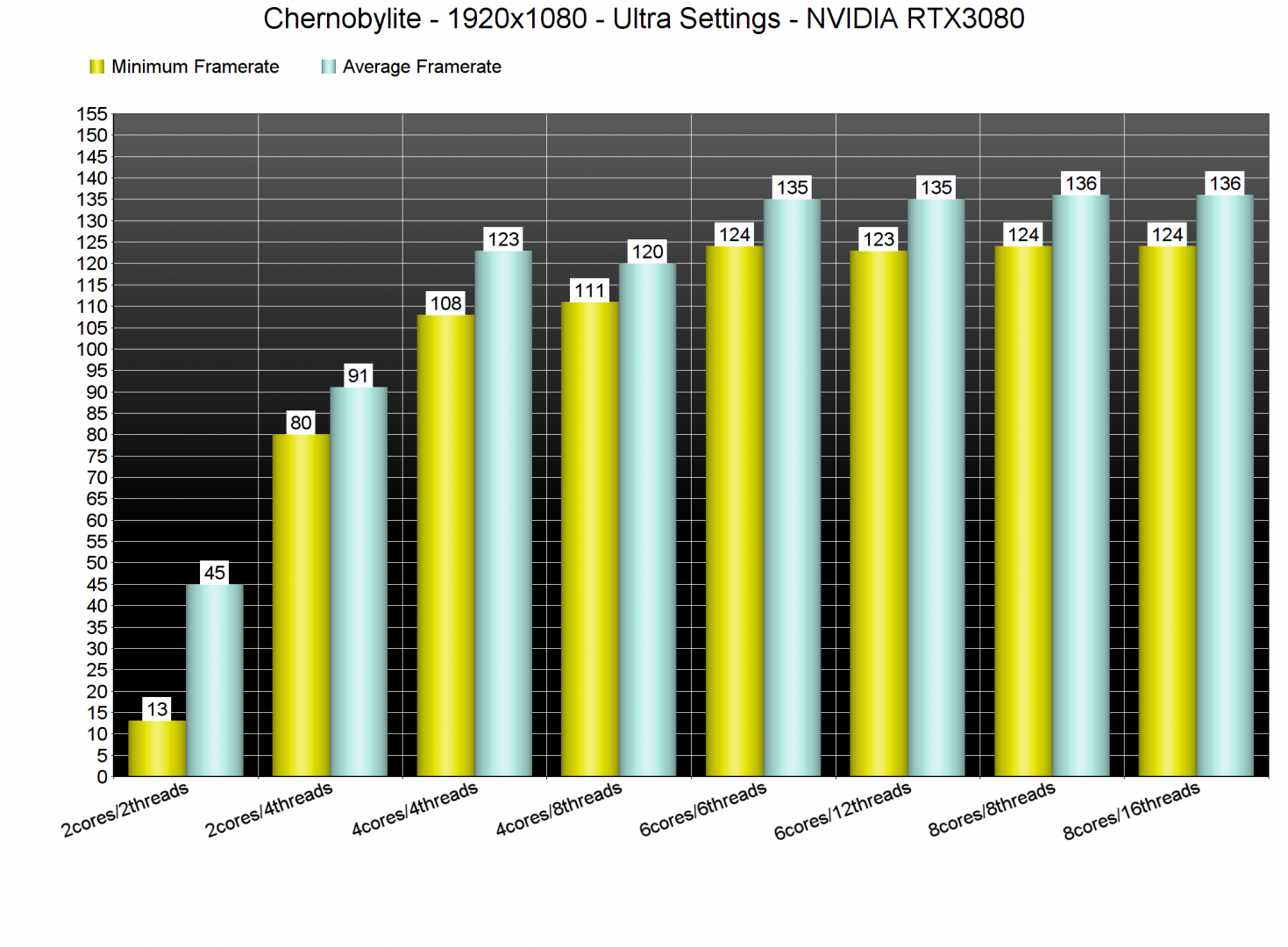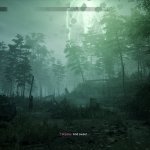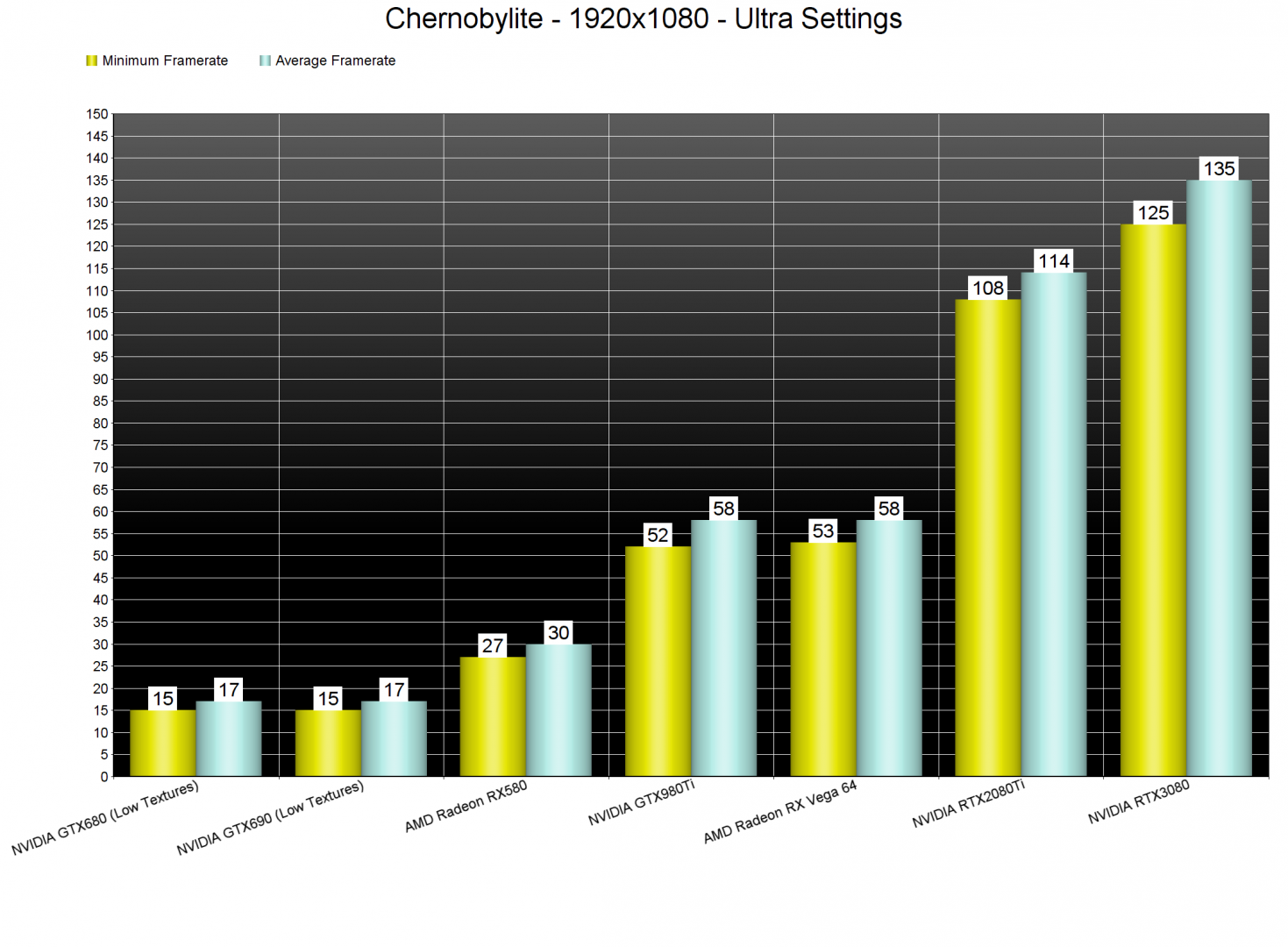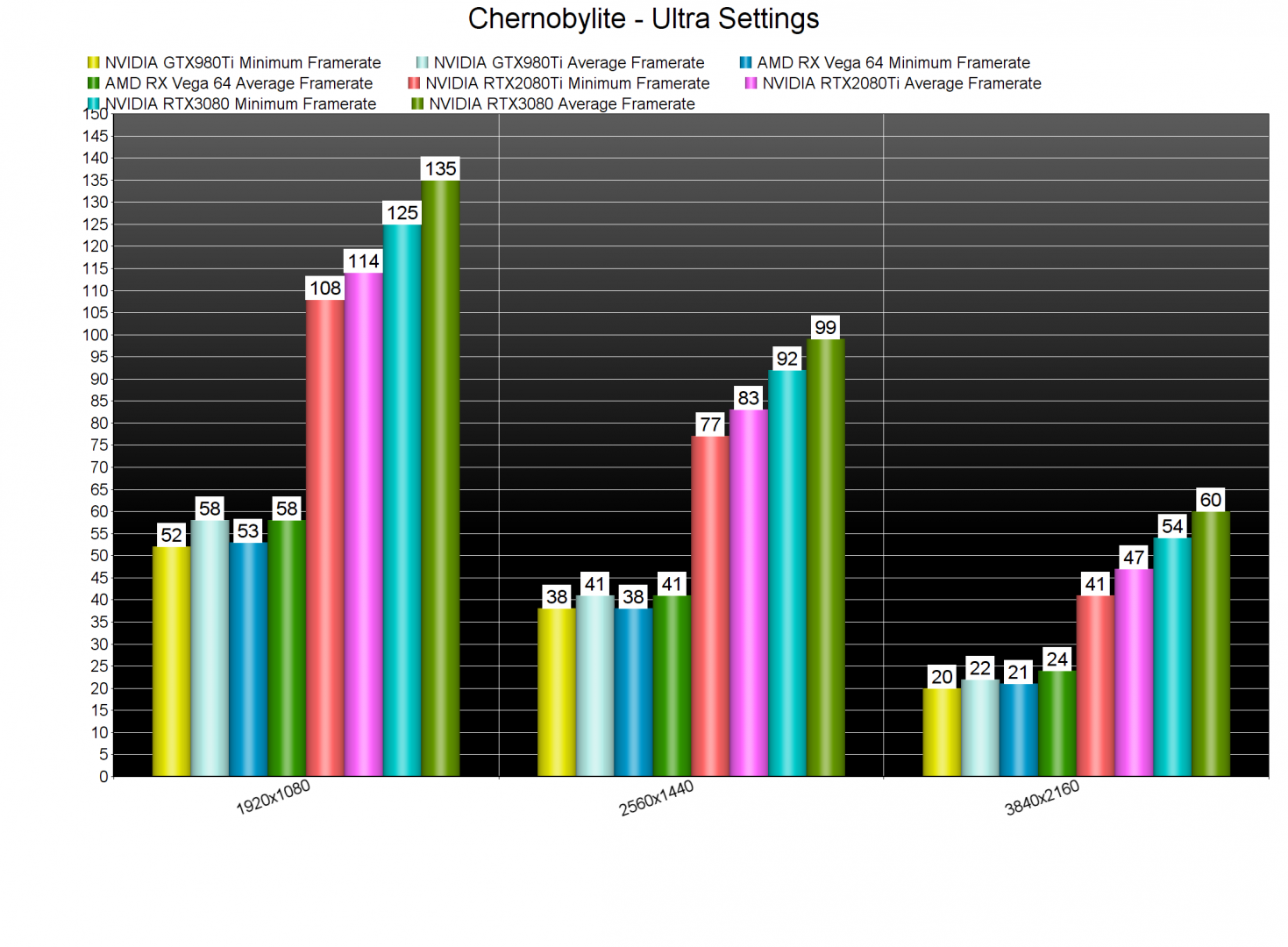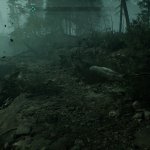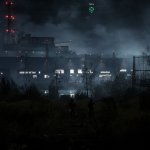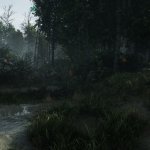Chernobylite is a new first-person shooter that is heavily inspired by the STALKER series. Powered by Unreal Engine 4, it’s time to benchmark it and see how it performs on the PC platform.
For this PC Performance Analysis, we used an Intel i9 9900K with 16GB of DDR4 at 3600Mhz, AMD’s Radeon RX580 and RX Vega 64, NVIDIA’s GTX690, GTX980Ti, RTX 2080Ti and RTX 3080. We also used Windows 10 64-bit, the GeForce driver 471.41 and the Radeon Software Adrenalin 2020 Edition 21.7.1 drivers. NVIDIA has not added any SLI profile for this game, meaning that our GTX690 behaved similarly to a single GTX 680.
The Farm 51 has included a respectable amount of graphics settings to tweak. PC gamers can adjust the quality of Geometry, Foliage, Draw Distance, Textures, Shadows, Anti-Aliasing and Effects. There are also options for Chromatic Aberration, Lens Flares, Contact Shadows, Bloom, Depth of Field and Motion Blur. Additionally, the game supports both NVIDIA’s DLSS and AMD’s FSR (you can find some DLSS benchmarks here). Lastly, the game has a FOV slider, a Resolution Scale setting, and supports uncapped framerates.
Chernobylite comes with a built-in benchmark tool. However, we’ve discovered that it does not really represent the in-game performance. As such, we’ve decided to use two different scenes for our GPU and CPU benchmarks. These are the worst-case scenarios we could find, so consider them as stress/extreme tests.
For our CPU benchmarks, we used the following area which features numerous enemies. In order to find out how the game scales on multiple CPU threads, we simulated a dual-core, a quad-core and a hexa-core CPU. Without Hyper-Threading, our simulated dual-core system had major stuttering issues. Thankfully, these stuttering issues were resolved the moment we enabled Hyper-Threading.
For our GPU benchmarks, we used the following scene. This scene was one of the most GPU-heavy scenes we could find. And, as we can see, the only GPUs that were able to offer a constant 60fps experience were the RTX 2080Ti and the RTX 3080. Again, this is the worst-case scenario, meaning that other areas will run significantly faster.
As with most Unreal Engine 4 games, AMD’s GPUs underperform in this one too. NVIDIA’s GTX980Ti manages to offer similar performance to the AMD Radeon RX Vega 64.
At 1440p/Ultra settings, the only GPUs that were able to run smoothly our stress scene were, again, the RTX 2080Ti and the RTX 3080. As for 4K, the RTX 2080Ti was way below 60fps and the RTX 3080 came close to a 60fps experience.
Graphics-wise, Chernobylite looks great. The game takes advantage of photogrammetry and most of its textures look great. Its lighting system is also amazing, as well as its draw distance. Even though it does not use any Ray Tracing effects, Chernobylite pushes some of the best visuals we’ve seen from “traditional” rasterized games. The Farm 51 was responsible for Get Even; a game that disappointed us with its visuals. Thankfully, Chernobylite is miles better than it, so kudos to the team.
All in all, Chernobylite does not require a high-end CPU in order to be enjoyed. Owners of modern-day quad-core CPUs will be able to run the game with more than 100fps. On the other hand, the game has some scenes in which even the high-end GPUs have trouble maintaining smooth framerates. And while its graphics justify these requirements (as the game looks great), there is definitely room for improvement. Thankfully, though, NVIDIA owners can enable DLSS in order to further improve their in-game performance.
Enjoy!

John is the founder and Editor in Chief at DSOGaming. He is a PC gaming fan and highly supports the modding and indie communities. Before creating DSOGaming, John worked on numerous gaming websites. While he is a die-hard PC gamer, his gaming roots can be found on consoles. John loved – and still does – the 16-bit consoles, and considers SNES to be one of the best consoles. Still, the PC platform won him over consoles. That was mainly due to 3DFX and its iconic dedicated 3D accelerator graphics card, Voodoo 2. John has also written a higher degree thesis on the “The Evolution of PC graphics cards.”
Contact: Email

